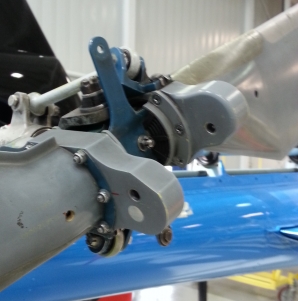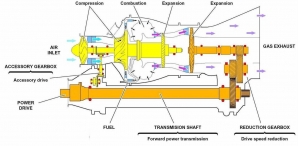Eurocopter uses composite technology in the AStar’s main and tail rotor systems. The helicopter’s two-blade tail rotor uses a single composite spar that runs through both blades. It is clamped in the middle at the hub and pitch changes are accomplished by twisting the composite material. The spar resists the twisting and tries to return to its natural state (it has a 10 degree pre-twist). This force is referred to as a zero-pitch-return-force and is fairly strong. Making the spar thick enough to have the necessary strength also makes it hard to twist. In normal operation with hydraulic boost, the tail rotor servo delivers enough force to overpower the zero-pitch-return-force and twists the spar as necessary changing the blades’ pitch angle. Thus, producing the amount of tail rotor thrust the pilot requires.
The boss weights assist by generating a centrifugal force that opposes the stronger zero-pitch-return-force. Essentially, they help hold twist in the spar reducing the workload on the tail rotor servo. During a hydraulic system failure the pilot must change tail rotor pitch by manually twisting the spar. The centrifugal force generated from the boss weights reduces the amount of pedal pressure required by the pilot to maintain yaw control. To further assist the pilot during hydraulic failures Eurocopter added a yaw load compensator to the tail rotor control linkage in the higher gross weight variants (B1, B2 and B3).





